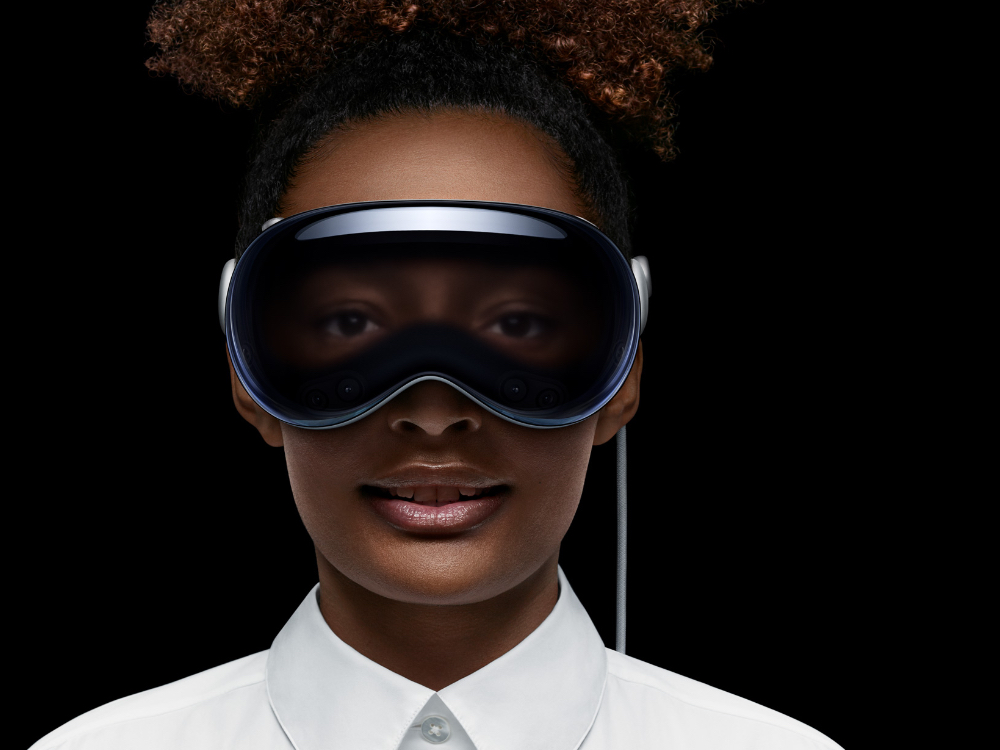|
Getting your Trinity Audio player ready...
|
“Millions of developers now have months to build content. And once they do, Vision Pro’s potential could emerge in ways not even Apple understands.”
“One more thing.”
With these words, harking back to the days of Steve Jobs, Apple CEO Tim Cook introduced the company’s first spatial computer, Vision Pro.
“Today marks the beginning of a new era for computing,” he announced. “Just as the Mac introduced us to personal computing, and iPhone introduced us to mobile computing, Apple Vision Pro introduces us to spatial computing.”
It’s essentially a standalone computer for the face, that seamlessly blends digital content with the physical world. You navigate simply by using your eyes, hands, and voice.
Here’s a quick look:
The new platform and headset have massive implications for the rest of the market; once Apple wades into a product category, it often both validates the category and obviates competitors.
Lauren Goode, senior writer at WIRED
Apple has indubitably blown the competition out of the water, whether it be from a technological perspective, aesthetics, or ease of use. Plus the new device fits neatly into the Apple ecosystem, and feels intimately familiar.
“All other VR companies are in deep trouble because Apple has raised the threshold,” noted Rony Abovitz, the founder and former chief of Magic Leap, a maker of augmented reality glasses. “They just laid down a gauntlet for companies like HTC and Samsung and Meta to chase. They have surpassed all of them in one shot.”
Watching Apple’s product reveal reminded me of watching Steve Jobs announce a product that would erase Blackberry and the PalmPilot from Planet Earth.
Nicholas Carlson, Insider’s global editor-in-chief
Nevertheless, it’ll be a while before Vision Pro gains mass adoption, given it’s a first-generation device with a hefty price tag—starting at $3,499, firmly placing it in the power user category for early adopters—and it will only be available early next year.
But with a new platform comes new potential and promises. From a publisher perspective, here are a few points to consider while gearing up for the new era of spatial computing.
Vision Pro will change the way we communicate, collaborate, work and enjoy entertainment.
Tim Cook, Apple CEO
1. “Incredibly crisp text”
Vision Pro provides an enormous, private, and portable 4K display with incredibly crisp text that’s great for reading. It actually delivers more pixels to each eye than a 4K TV.
The resolution means that text is actually readable. Apple’s positioning of this as a full-on computing device only makes sense if you can actually read text in it. All of the previous iterations of “virtual desktop” setups have relied on panels and lenses that present too blurry a view to reliably read fine text at length. In many cases it literally hurt to do so. Not with the Apple Vision Pro — text is super crisp and legible at all sizes and at far “distances” within your space.
Matthew Panzarino, Editor in Chief of TechCrunch
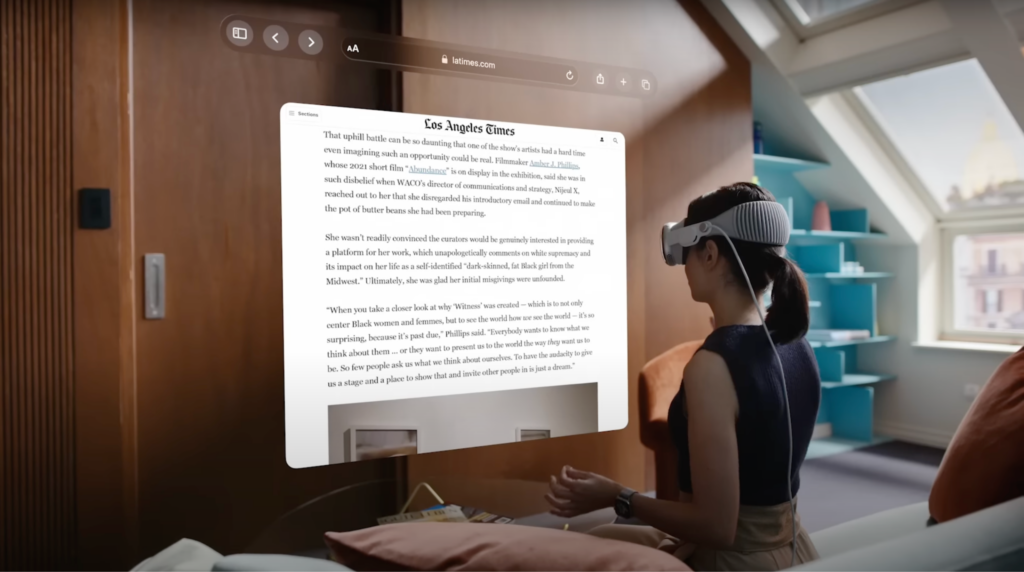
I was surprised by the clarity and comfort of simply reading a PDF document.
Patrick McGee, FT’s San Francisco correspondent
2. Immersive, focused experience
A user’s world can grow beyond the dimensions of the physical environment with dynamic, beautiful landscapes that can help them focus or reduce clutter in busy spaces.

3. “Anything that your Mac or iPhone can do”
Headsets with limited use cases tend to fall into disuse. Since Apple Vision Pro is a full-fledged spatial computer, it’ll tend to get used more, much like other everyday computing devices like laptops and tablets.
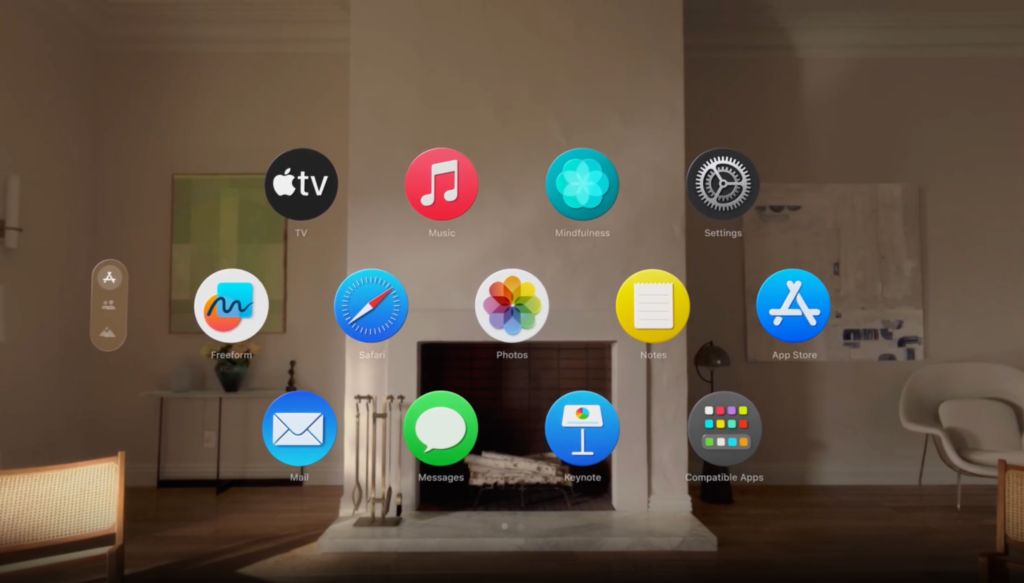
4. Bring static content to life
Vision Pro’s cutting-edge technologies can transform the way readers experience digital publications. By overlaying virtual elements on the real world, publishers can bring static content to life, providing readers with an interactive and captivating experience.
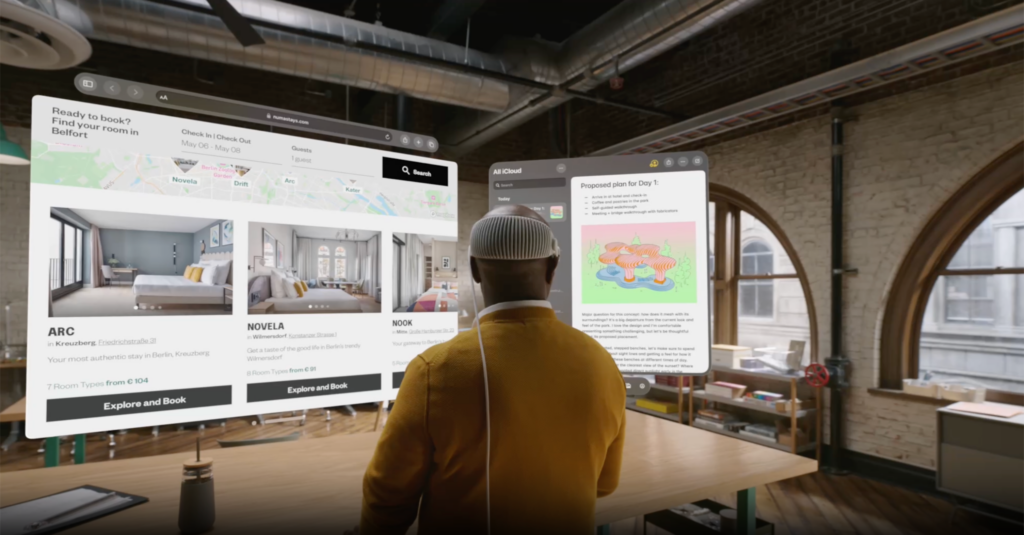
Apple’s Vision Pro headset has the potential to eventually mainstream AR in a way that other face computers haven’t, simply because it’s Apple. Already developers are expressing excitement about the headset.
Lauren Goode, senior writer at WIRED
5. Lean-back consumption
While as a computer, the Vision Pro can also act as a lean-forward medium, it offers a relaxed, lean-back way to experience content, whether on a long flight or the couch at home. Lean-back consumption correlates to an increase in demand for content.
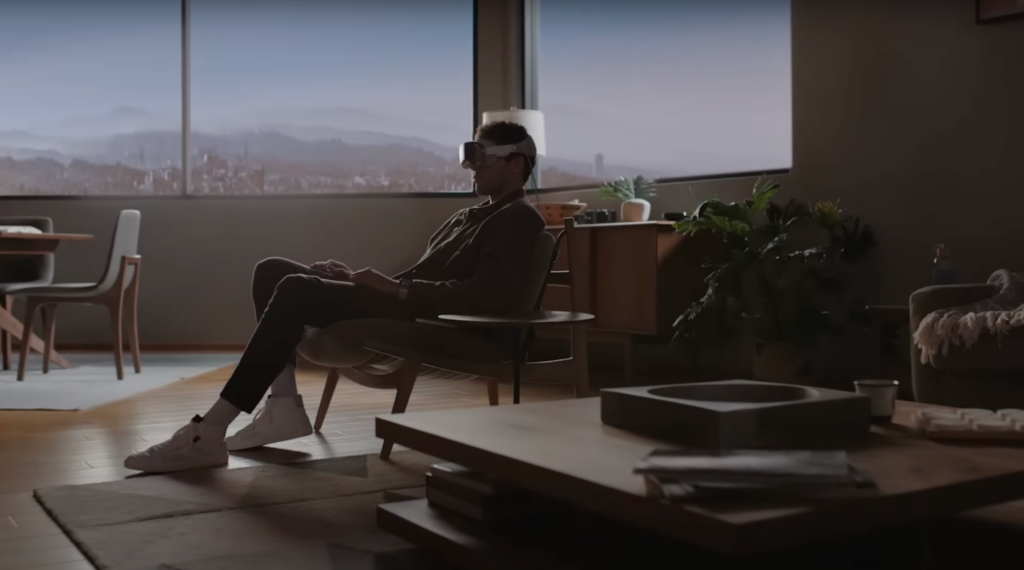
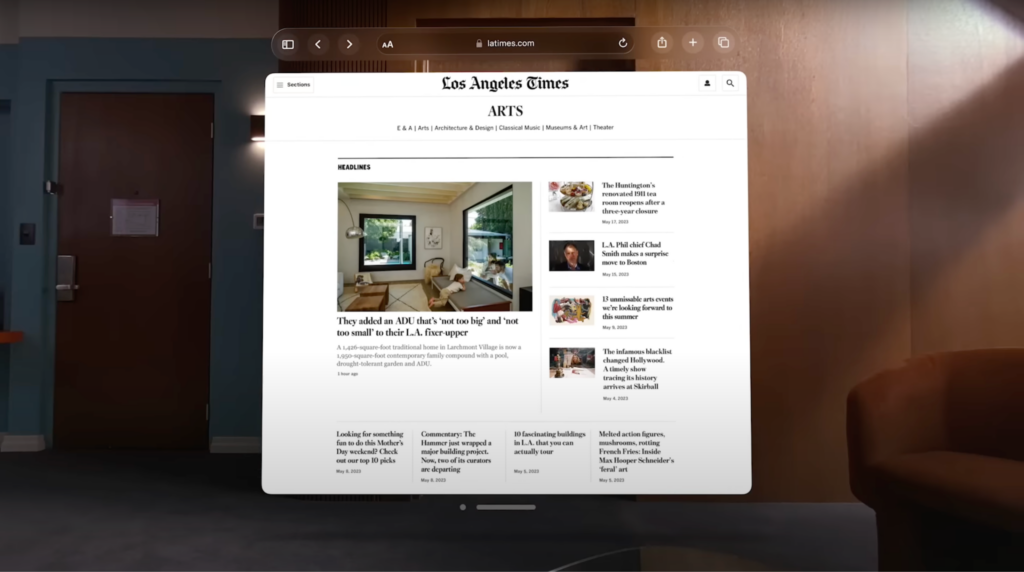
6. EyeSight advantage
Every other AR/VR headset available today cuts the user off from his/her physical environment, causing resistance to use. Vision Pro features EyeSight, an extraordinary innovation that helps users stay connected with those around them. The device feels transparent, and also gives visual cues to others about what the user is focused on. Another factor that will tend to increase adoption and usage.
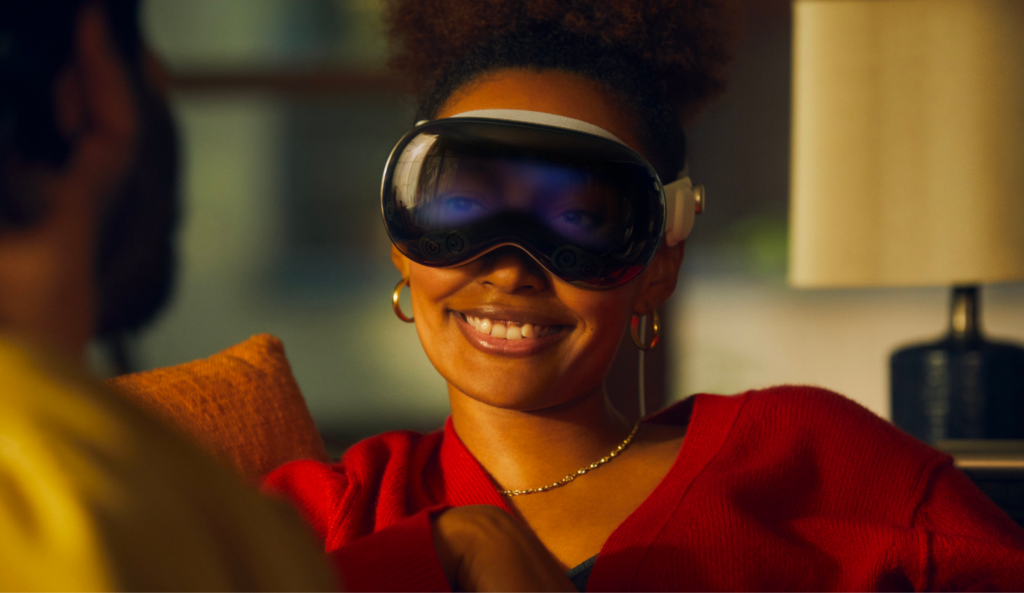
Having a real-time 4k view of the world around you that includes any humans in your personal space is so important for long-session VR or AR wear. There is a deep animal brain thing in most humans that makes us really, really uncomfortable if we can’t see our surroundings for a length of time. Eliminating that worry by passing through an image should improve the chance of long use times.
Matthew Panzarino, Editor in Chief of TechCrunch
7. “Look Ma, no hands!”
Much of our content consumption involves holding up screens or physical products, contributing to arm muscle fatigue and consequent reduction in usage. While Vision Pro will definitely free up our hands, it remains to be seen whether fatigue in eyes or neck muscles become factors in the the new era of spatial computing.
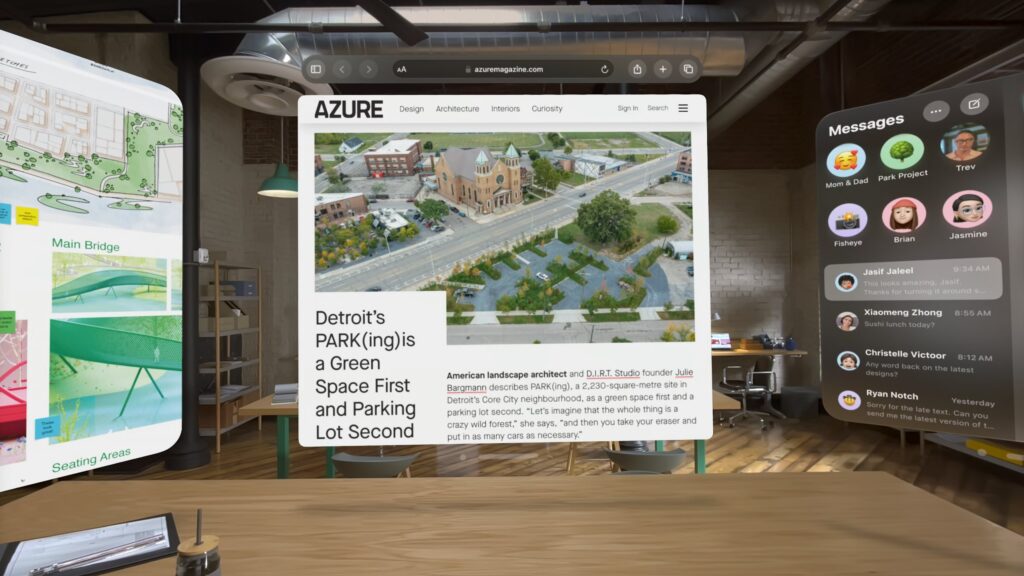
Millions of developers now have months to build content. And once they do, Vision Pro’s potential could emerge in ways not even Apple understands.
Patrick McGee, FT’s San Francisco correspondent
If you missed Apple’s big reveal at WWDC, here’s a more in-depth look at what the Vision Pro is all about:


